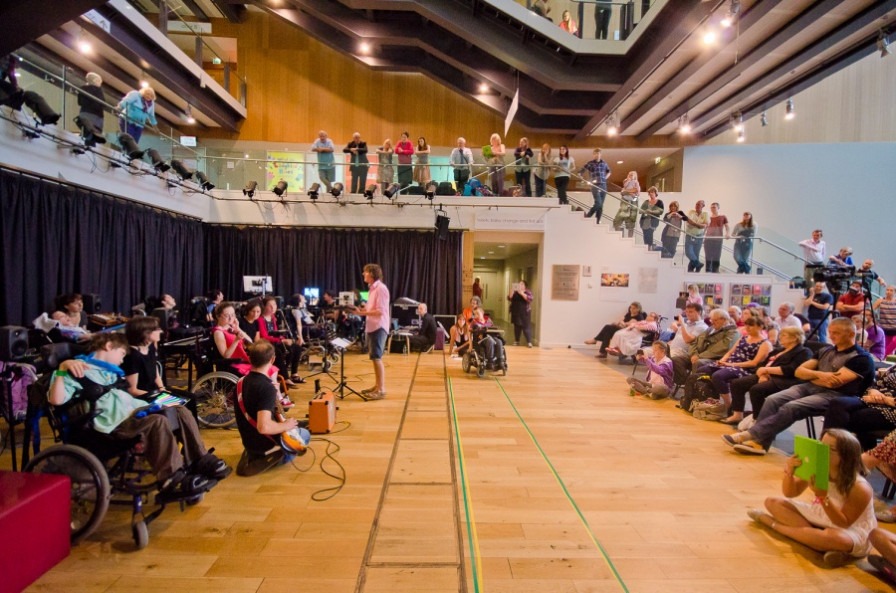Repertoire for SEN/Disabled young musicians

This is a call out for repertoire suggestions! We’re looking for music suitable for youth orchestras that are open and accessible to disabled young musicians. But what does ‘accessible repertoire’ mean, and what are the ingredients that can open up existing musical repertoire?
The first Accessible Youth Orchestras concert at Bristol’s Colston Hall on 14th July 2014 was a great success, and the MUSE Project is now working to develop more orchestras that are open and accessible to disabled young musicians. Also, following the publication of our recent consultation findings, we’re changing our name from MUSE to ‘OpenUp’, with our two main strands of work being ‘OpenUp Youth Orchestras’ and ‘OpenUp Musical Instruments’.
A key part of our work will also be to OpenUp musical repertoire, because historically, most of the world’s musical repertoire has been created by non-disabled composers, for non-disabled musicians to play. Although increasing attention is now paid to accessible musical instruments, the nature of some musical repertoire itself can present barriers to disabled musicians. Last year we explored this issue by developing music in a different way for each of the three orchestras who performed on 14th July:
- The Claremont School Orchestra commissioned Kid Carpet to compose a new work - ‘Movement In Four Colours’
- The Star College OrcheStar devised a new work from scratch
- The Threeways School Orchestra reworked an existing piece - Montiverdi’s ‘Pur Ti Miro’.
As well as continuing to commission new compositions, we want to identify many more existing pieces of music that are inherently well disposed to being reworked for performance by disabled young musicians. And we would really welcome your suggestions! The music can be from any genre or tradition, but bearing in mind the following considerations.
The focus is on providing opportunities for:
- Playing instruments live, in real time (both acoustic / conventional and electronic / assistive instruments)
- Performing together, in groups of different sizes
- Expressive playing
We're trying to avoid:
- Pre-recorded loops / beats or backing tracks
- Music that simply doesn’t work without; a) strict or complicated rhythms, or sudden tempo changes, b) rapid and regular key changes
Some useful considerations include:
- Ground Bass or other Ostinato features
- Music that is able to withstand the tempo being pushed and pulled around
- Melodies or motifs that can be re-worked and developed in different ways
We’re not looking for these pieces to be played exactly as they were written, but rather to take the compositions as starting points to be re-worked, using the key motifs. Although we’re open to music from any genre or tradition, it’s interesting to consider the fact that the pre-eminence of metronomic beats in most modern pop, rock & electronic dance music can be problematic for disabled musicians for whom keeping very strict time while playing live may present barriers. The repertoire we’re looking for needs to function when taken ‘off-grid’ and allowed to flow more freely.
If you do have any suggestions to make, or if you can share this call-out with friends and colleagues who might be interested, we would be extremely grateful! Please post comments below, email us, or make suggestions via Twitter or Facebook. Thanks!
Photo by Sarah Bentley Photography.
